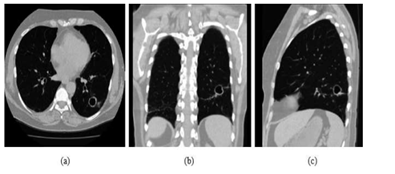AUTOMATED LUNG CANCER RECOGNITION BY A CONVOLUTIONAL NEURAL NETWORK
DOI:
https://doi.org/10.71146/kjmr511Keywords:
Lung cancer, Histopathological Pictures, Convolutional Neural Network (CNN), Transfer Learning, Lung Cancer DetectionAbstract
Cancer of the lung is a massively common fatal kind of cancer in not only medical practice but also the world. It is the second common cancer diagnosed and causes more than 71 % of deaths as a result of non-communicable diseases (NCDs). It is also important that early and accurate diagnosis should be made in order to increase the survival rates of patients and their desired outcome. One of the most valid methods of establishing a certain type and stage of lung cancer is to carry out a histopathological examination of the lung tissue. Manual examination of histopathological slides, however, consumes time, expertise is required, and it is prone to errors by the person performing the task. In this paper, two approaches to automate the classification of lung cancer based on histopathology images using deep learning have been proposed: a Convolutional Neural Network (CNN) built to address the problem and transfer learning, using the EfficientNetB3 pre-trained model. This is aimed at helping the pathologists to come up with the correct diagnosis that is a timely manner. Relatively low computational complexity. The Simple CNN model achieved an accuracy of 94.66%, indicating its potential, even though it is computationally not demanding. EfficientNetB3, in turn, demonstrated excellent results and could reach an accuracy of 100%, with high precision, recall, and F1-scores, proving how strong transfer learning can be in this task. Contrary to most of the earlier works, which dealt with either CT or X-ray pictures, our study focuses on histopathological pictures, which present the cellular detail. The results demonstrate the criticality of model architecture to the increase in diagnosing accuracy and emphasize the potential of deep learning in medical diagnosis. Such models can relieve the diagnostic load, reduce mistakes, and guarantee a quicker clinical judgment, which is why they can be highly helpful to the wider medical sector.
Downloads

Downloads
Published
Issue
Section
License
Copyright (c) 2025 Rida Ali, Adeel Shahzad, Mohsin Ali Tariq, Muhammad Fuzail, Ahmad Naeem, Naeem Aslam (Author)

This work is licensed under a Creative Commons Attribution 4.0 International License.






